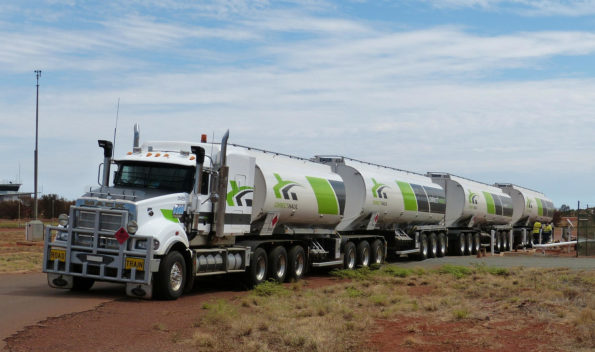There are four main types of tanker truck.
Fuel tankers transport petrol and diesel. They often have different compartments within the tanks so that they can haul different octanes of petrol, plus diesel, in the same load. Within the tank, they have baffles to stop the fuel sloshing around. The trucks are fairly easy to drive as there’s not much surge from the fuel due to the baffles. The best work is delivering bulk fuel rather than the petrol stations. Fuel tanks can be emptied by gravity or pumped.

Chemical tankers have smaller cylindrical tanks. They can be trickier to drive. The tanks don’t tend to have compartments or baffles because if the tank is used for multiple types of chemicals they need to be washed out between loads. Baffles create areas that are difficult to clean and create a risk of cross contamination. This is a major issue for certain dangerous goods. Drivers find that these trailers are not as nice to pull because of the slosh. The trailer might only be half full, so the sloshing is worse.
Chemical tankers are more difficult to drive in slippery conditions on hills. As you are driving uphill, the chemicals flow to the rear of the tank, unloading the drive axles as there’s now much less weight on the turntable. If you break traction on your drive wheels it can be difficult to get going again.
The driver tends not to load and unload the goods, it’s more frequently done by the refinery or plant that you’re delivering to or picking up from. Chemical tankers usually work by appointment. The work scheduling tends to be less pressured with dangerous goods – people don’t want the risk of creating or being in an incident which causes a leak of dangerous chemicals. There can be a bit of downtime while waiting to be loaded. Chemical tankers are sometimes heated or cooled to keep product at the right temperature and consistency.
Chemical tankers can be used to transport food, such as oils, wine, milk, etc.
Chemical tanker work has high liability for the driver. A dashcam is important, plus triple checking the documentation and being very careful when driving and loading/unloading.
Drivers tend to get paid more transporting chemicals because of the risk and the compliance requirements (e.g. they need to know the documentation and have the right qualifications to transport the products).
Pneumatic tanks are large tanks that haul bulk dry product like concrete, plastic pellets, etc. They unload through a pressurised system (a ‘blower’).
Propane tanks transport liquid propane. This is pressurised loading; the centre of gravity is high at the top and narrower at the bottom.
